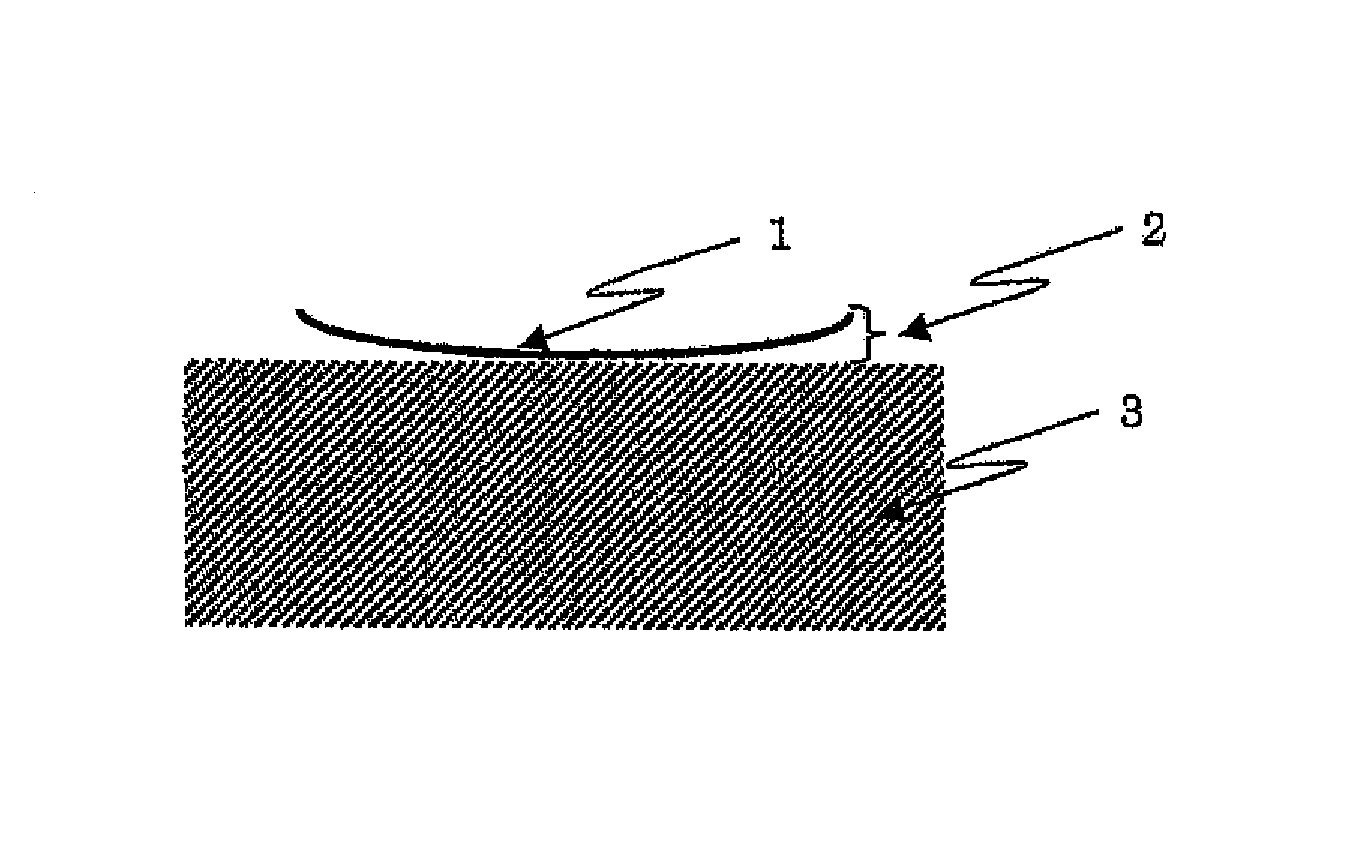Novel photosensitive resin composition and use thereof
a technology of resin composition and photosensitive resin, which is applied in the direction of photosensitive materials, instruments, photomechanical equipment, etc., can solve the problems of low workability at the time of bonding, insufficient alignment, and difficulty in ensuring an opening in a thin cover lay film with a high accuracy, and achieve excellent flexibility, small warpage, and excellent tack-free properties.
- Summary
- Abstract
- Description
- Claims
- Application Information
AI Technical Summary
Benefits of technology
Problems solved by technology
Method used
Image
Examples
synthesis example 1
[0155]
[0156]Into a reaction vessel equipped with a stirrer, a thermometer, a dropping funnel, and a nitrogen-inlet tube, 100.0 g of methyltriglym (=1,2-bis(2-methoxyethoxy)ethane) was added as a solvent for polymerization and heated to 80° C. while being stirred in a nitrogen stream. Then, a mixture of 12.0 g (0.14 mol) of methacrylate, 28.0 g (0.16 mol) of benzyl methacrylate, 60.0 g (0.42 mol) of butyl methacrylate, and, as a radical polymerization initiator, 0.5 g of azobisisobutyronitrile, which had been mixed in advance at room temperature, was dropped from a dropping funnel for 3 hours while the mixture was maintained at 80° C. After the dropping was completed, the reactant solution was heated to 90° C. while being stirred, and the reactant solution was further stirred and reacted for 2 hours while the reactant solution was maintained at 90° C. Thus obtained was a resin solution containing a carboxyl group in its molecule. The obtained resin solution had a solid content concen...
synthesis example 2
[0165]
[0166]Into a reaction vessel equipped with a stirrer, a thermometer, and a nitrogen-inlet tube, 25.00 g of methyl triglym (=1,2-bis(2-methoxyethoxy)ethane) was added as a solvent for polymerization. Then, 5.16 g (0.024 mol) of norbornene diisocyanate was added therein and heated to 80° C. while being stirred in a nitrogen stream so that norbornene diisocyanate was dissolved in the solvent. Into a resultant solution was added, over 1 hour, a solution in which 50.0 g (0.025 mol) of polycarbonate diol (product name PCDL T5652, manufactured by Asahi Kasei Co., Ltd. and having a weight-average molecular weight of 2000) was dissolved in 25.00 g of methyl triglym. A resultant solution was stirred by heating at 80° C. for 5 hours to carry out a reaction. In this way, a resin solution having a urethane bond in its molecule was prepared. The resin solution thus obtained had a solid content concentration of 53% and a weight-average molecular weight of 5,600. Note that the solid content c...
synthesis example 3
[0167]
[0168]Into a reaction vessel equipped with a stirrer, a thermometer, and a nitrogen-inlet tube, 30.00 g of methyl triglym (=1,2-bis(2-methoxyethoxy)ethane) was added as a solvent for polymerization. Then, 10.31 g (0.050 mol) of norbornene diisocyanate was added and heated to 80° C. while being stirred in a nitrogen stream so that norbornene diisocyanate was dissolved in the solvent. Into a resultant solution was added, over 1 hour, a solution in which (i) 50.0 g (0.025 mol) of polycarbonate diol (product name PCDL T5652, manufactured by Asahi Kasei Co., Ltd. and having a weight-average molecular weight of 2000) and (ii) 6.51 g (0.050 mol) of 2-hydroxyethyl methacrylate were dissolved in 30.00 g of methyl triglym. A resultant solution was stirred by heating at 80° C. for 5 hours to carry out a reaction. In this way, a resin solution having a urethane bond and a methacryloyl group in its molecule was prepared. The resin solution thus obtained had a solid content concentration of...
PUM
| Property | Measurement | Unit |
|---|---|---|
| particle diameter | aaaaa | aaaaa |
| glass transition temperature | aaaaa | aaaaa |
| concentration | aaaaa | aaaaa |
Abstract
Description
Claims
Application Information
 Login to View More
Login to View More - R&D Engineer
- R&D Manager
- IP Professional
- Industry Leading Data Capabilities
- Powerful AI technology
- Patent DNA Extraction
Browse by: Latest US Patents, China's latest patents, Technical Efficacy Thesaurus, Application Domain, Technology Topic, Popular Technical Reports.
© 2024 PatSnap. All rights reserved.Legal|Privacy policy|Modern Slavery Act Transparency Statement|Sitemap|About US| Contact US: help@patsnap.com










